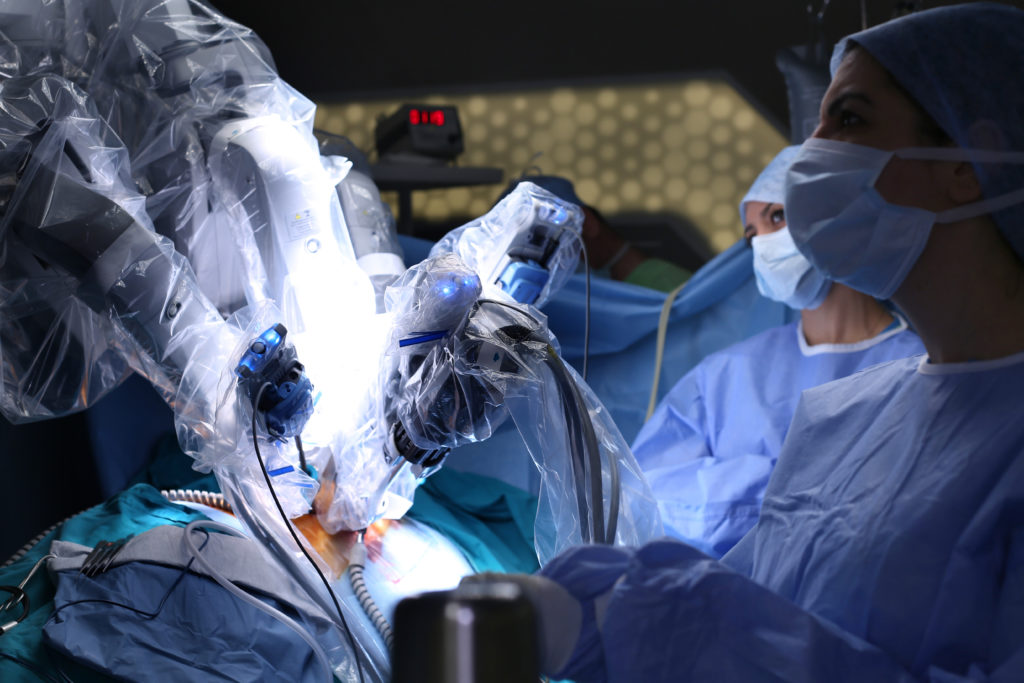Healthcare and technology are intrinsically linked. Whether through the development of new drugs or the design and manufacture of more sophisticated devices to examine, diagnose, monitor conditions and administer treatment, technology in one form or another has always been right at the heart of healthcare delivery.
Last year the UK marked 70 years since the foundation of the National Health Service, which made access to state-provided medical services – and with it a great number of technical innovations – free at the point of delivery. Here we take a look at the past, present and future of Medtech innovation.
Medical technology through the 20th century was largely focussed on the development of hardware for the purpose of enabling more sophisticated or efficient diagnosis, treatment or therapy. For example, patients who rely on a pacemaker today are probably unaware that a patent for the first pacemaker was filed as far back as 1930, describing a motor “preferably wound up by use of a key” and a needle that rather ominously required to be “thrust” into the stopped heart (see figure below).

Other examples of significant “hardware” innovations include the first artificial heart (with a patent filed for in 1961), ultrasound (1965), magnetic resonance imaging (1972), the Insulin pump (1974), laser eye surgery (1988) and fully articulating bionic hands (2006, below).

In the present day, the focus of Medtech innovation has shifted towards harnessing the increasing sophistication and market penetration of mainstream consumer electronics to put diagnosis and therapy into patients’ hands and reduce strain on medical services.
The latest flagship smartphones and smartwatches come equipped with enough processing and graphics power, high-end photographic hardware and software, and fast enough always-on connectivity, to enable increasingly powerful imaging and diagnostic functionality. The Apple Watch Series 4, for example, launched in September 2018, is the first mainstream consumer-grade wearable device to include FDA-approved electrocardiography (ECG) capabilities. Although a physician would be unlikely to rely solely on the data from an Apple Watch just yet, this is an example of the shift in focus towards making use of mainstream consumer electronics.
Other examples of this trend for enabling self-monitoring and diagnosis by patients include Dexcom’s continuous glucose monitoring system that connects data from a dedicated reader to a smartphone and smartwatch app; Butterfly Network’s “ultrasound on a chip” that enables smartphones to be used for ultrasound scanning; and the Qardio’s smart blood pressure monitor. The next logical step in enhancing patients’ understanding of their symptoms and accelerating their access to medical services has been taken by Medtech companies such as Zavamed and Babylon, whose apps connect patients directly to professional medical advice – whether from “real life” practitioners or “artificial intelligence” (AI).
Looking to the future, it seems clear that artificial intelligence will become ever more prevalent in Medtech innovation as it facilitates the continuous enhancement of diagnosis and monitoring software. Indeed, AI is already starting to have its moment. One interesting development is the ongoing collaboration between Moorfields Eye Hospital and AI pioneer DeepMind to automatically detect eye conditions from eye scans in seconds and prioritise patients in urgent need of treatment. The ever-improving AI currently matches the accuracy of expert doctors with 20 years of clinical experience. Medical imaging is an obvious target for the implementation of AI – the amount of data generated by medical imaging equipment is enormous, enabling effective training of machine learning algorithms.
The shift in innovation focus from more traditional hardware towards software and the use of artificial intelligence poses interesting questions from an intellectual property point of view, where software and mathematical methods as such are typically excluded from patent protection. However, so long as the invention provides a “technical effect” beyond implementing the software on a computer, or performing a mathematical algorithm, it may be patented. The European Patent Office recently recognised the increasing prevalence of AI and machine learning by including a specific section on these techniques in its latest examination guidelines. In essence, the EPO are open to allowing patents based on machine learning techniques, so long as the machine learning is used in a technical system or method in order to provide an overall technical effect. For example, the EPO gives the use of a neural network in a heart-monitoring apparatus for the purpose of identifying irregular heartbeats as making such a required technical contribution.
As the focus of innovation within the Medtech field increasingly shifts to include AI and machine learning techniques, this welcome update from the EPO should provide some comfort to companies looking to protect their intellectual property in this sector.
If you would like any further advice on this matter, please get in touch with Mark Aldred, via mark.aldred@gje.com.


